
InterWay
Project Type: Passion Project
Individual Project
InterWay is an advanced navigation application specifically engineered to enhance mobility for individuals with disabilities, particularly those dependent on wheelchairs for transportation.
This innovative solution empowers users by providing them with the ability to proactively identify and navigate around potential barriers, thanks to its feature of allowing users to mark obstacles and areas with substandard accessibility directly on the map.
01. Project Highlights
Seamless Accessibility Information Across Your Journey

Sample High-Fidelity Pages
Effortless Rerouting at Your Fingertips

Sample High-Fidelity Pages
Advanced Route Optimization: Tailored, Safe, and Efficient
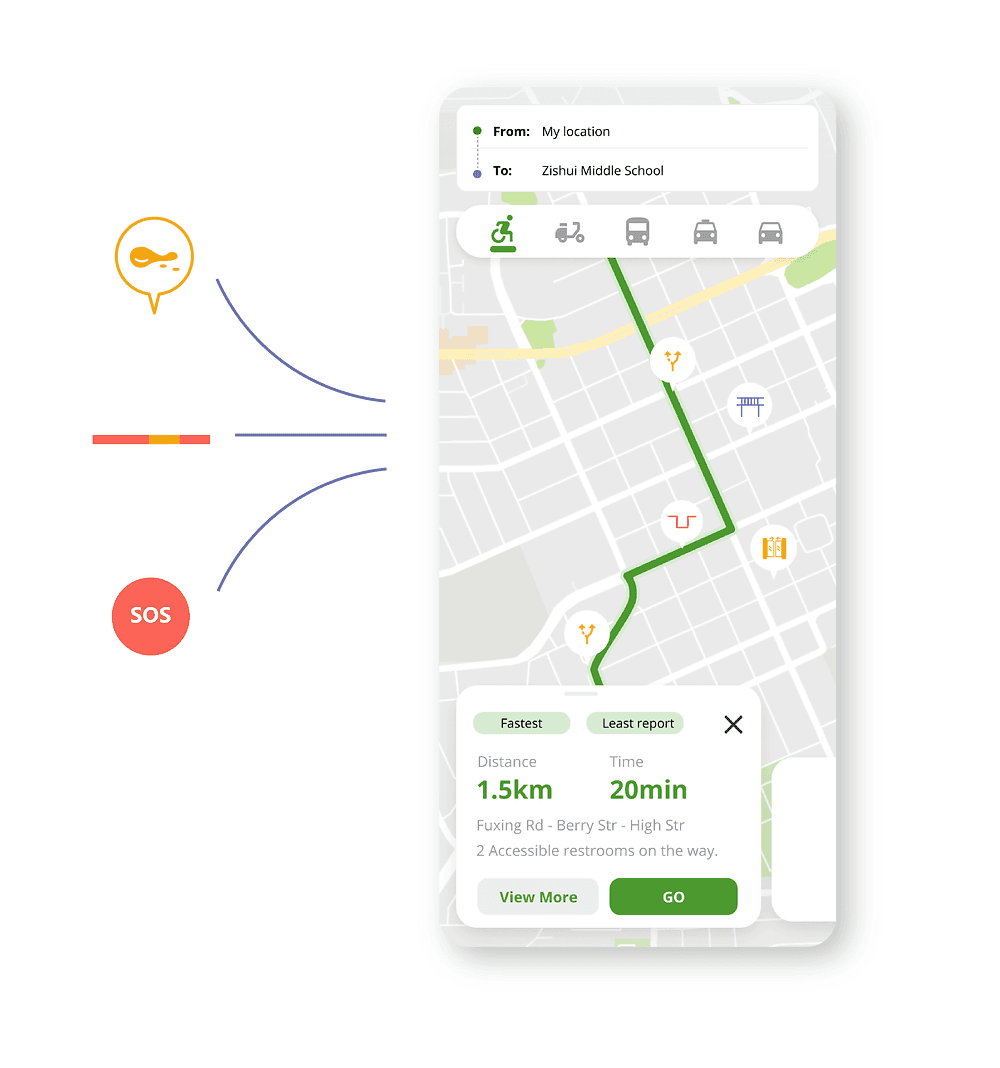
Sample High-Fidelity Pages
Empower Your Journey: Share, Rate, and Influence

Sample High-Fidelity Pages
02.Context
In China, persons with disabilities face significant barriers to social participation and access to healthcare, particularly in rural areas. Despite some government support, employment services and societal integration for those with disabilities show limited improvement, further hampered by traditional mindsets and inadequate infrastructure.
This project aims to introduce a dedicated navigation app, designed to transform outdoor accessibility for those with physical disabilities.
85 Million
Disabled People
Inadequate Infrastructure

03.Understanding the problem
3.1 Guiding Questions

3.2 Research Methods
Survey
41
Valid Responses
The questionnaire was distributed through accessibility-related web forums and group chats.
Interview
3
Key Informants
Get a first-hand perspective on the experience of traveling with a disability.
Cyber-ethnography
3
VLOGS
Get a first-hand perspective on the experience of traveling with a disability.
Embodied Research
1
Whole Day
I tried to get around in a wheelchair for a day with assistance of my friend.
3.3 Research Analysis
-- Affinity Diagram
The analysis started with a detailed review of the collected data, leading to the extraction of key points and their categorization into codes. These codes, based on shared characteristics, were organized into ten themes. Further in-depth analysis of these themes revealed two main issues: inadequate facilities and insufficient accessible information.


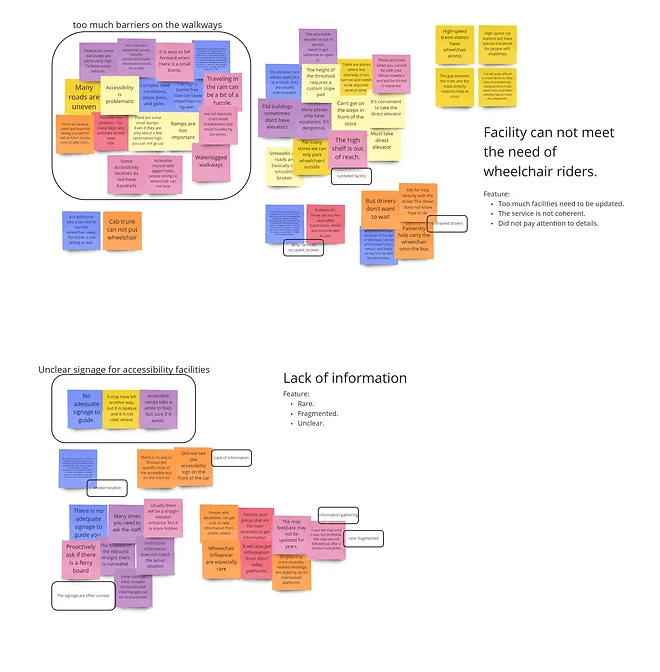
Key Findings from the Affinity Mapping Process:
Facility-Related :
Maintenance and Modernization: Many facilities require repair or updates to be truly accessible.
Inconsistency in Services: Services designed to aid people with disabilities during travel lack uniformity.
Detail-Oriented Design Flaws: A general oversight in the meticulousness of facilities and services complicates their usability.
Information Accessibility:
Scarcity: There's a notable lack of necessary information for navigation and access.
Fragmentation: Information that is available is often disjointed and spread across various sources.
Clarity Deficit: The information that does exist lacks clarity, making it difficult to comprehend and utilize.
3.4 Research Analysis
-- User Journey Map
This method allowed for an evaluation across various dimensions of the user experience, including the actions users need to undertake during their journey, their emotional states and experiences at different stages, the effectiveness of existing products at these stages, and potential opportunities for new product development.
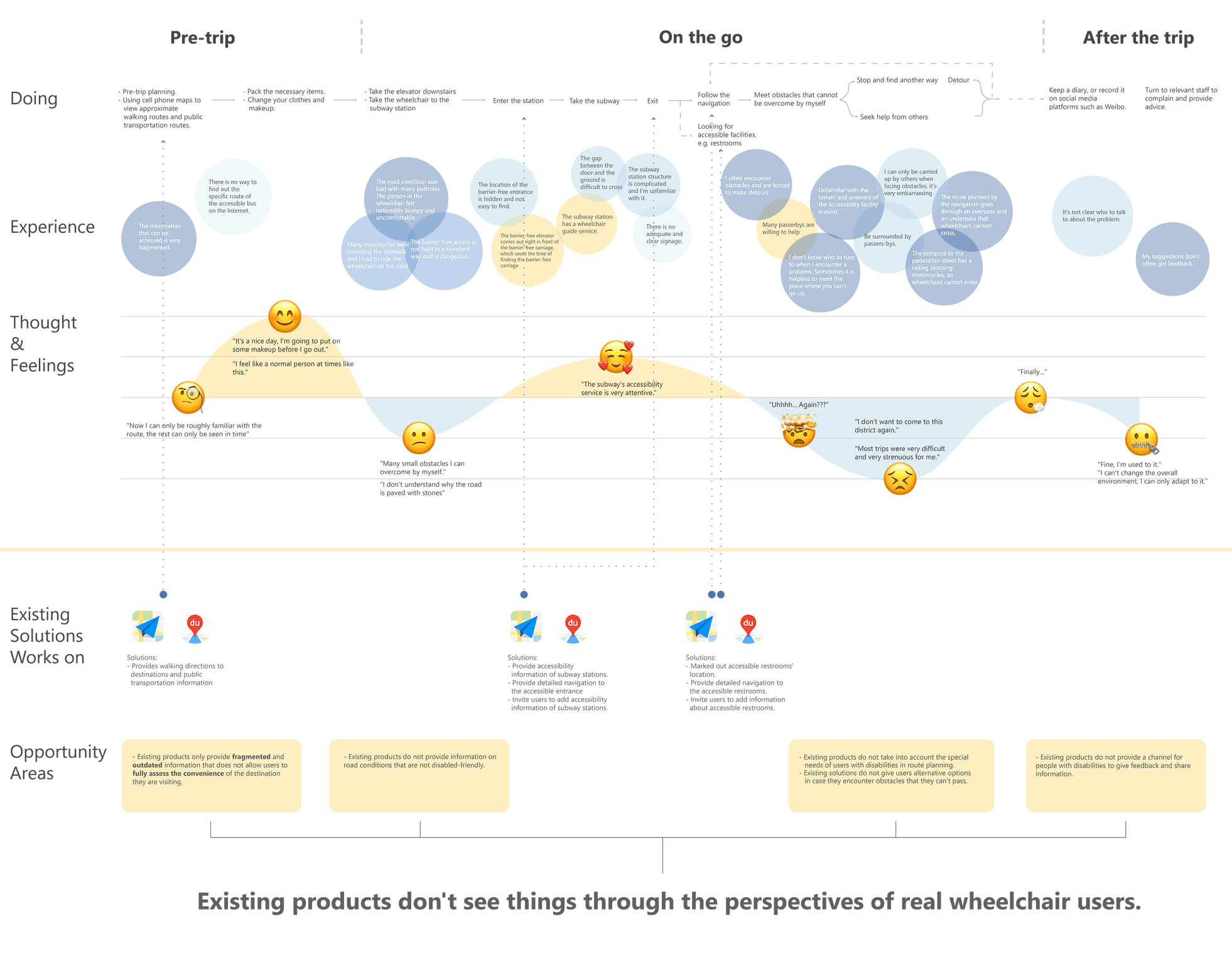
Key Findings from the User Journey Mapping:
Key Challenges for People with Disabilities in Unfamiliar Environments:
Navigating barriers: Difficulty finding accessible routes, encountering physical obstacles, and maneuvering in unfamiliar layouts.
Finding accessible facilities: Inability to easily locate restrooms, elevators, ramps, and other accommodations relevant to their needs.
Seeking assistance: Lack of clear information or readily available support when needing help navigating or accessing facilities.
Impact:
Negative emotions: Increased anxiety, frustration, and disappointment can hinder their overall experience.
Discouragement: May lead them to avoid exploring new places in the future.
4.From Problems to Opportunities
Existing solutions offer limited value to wheelchair users:
Focus on static accessibility standards (e.g., restrooms, elevators) rather than real-world user experience.
Outdated and fragmented information hinders trip planning and problem-solving.
Lack of feedback channels prevents user input and improvement.
Consequently, wheelchair users:
Face limitations in unfamiliar environments.
Are restricted to familiar areas.
Based on this problem statement, the project's design brief was established to identify the necessary services for a new application serving the needs of wheelchair users.
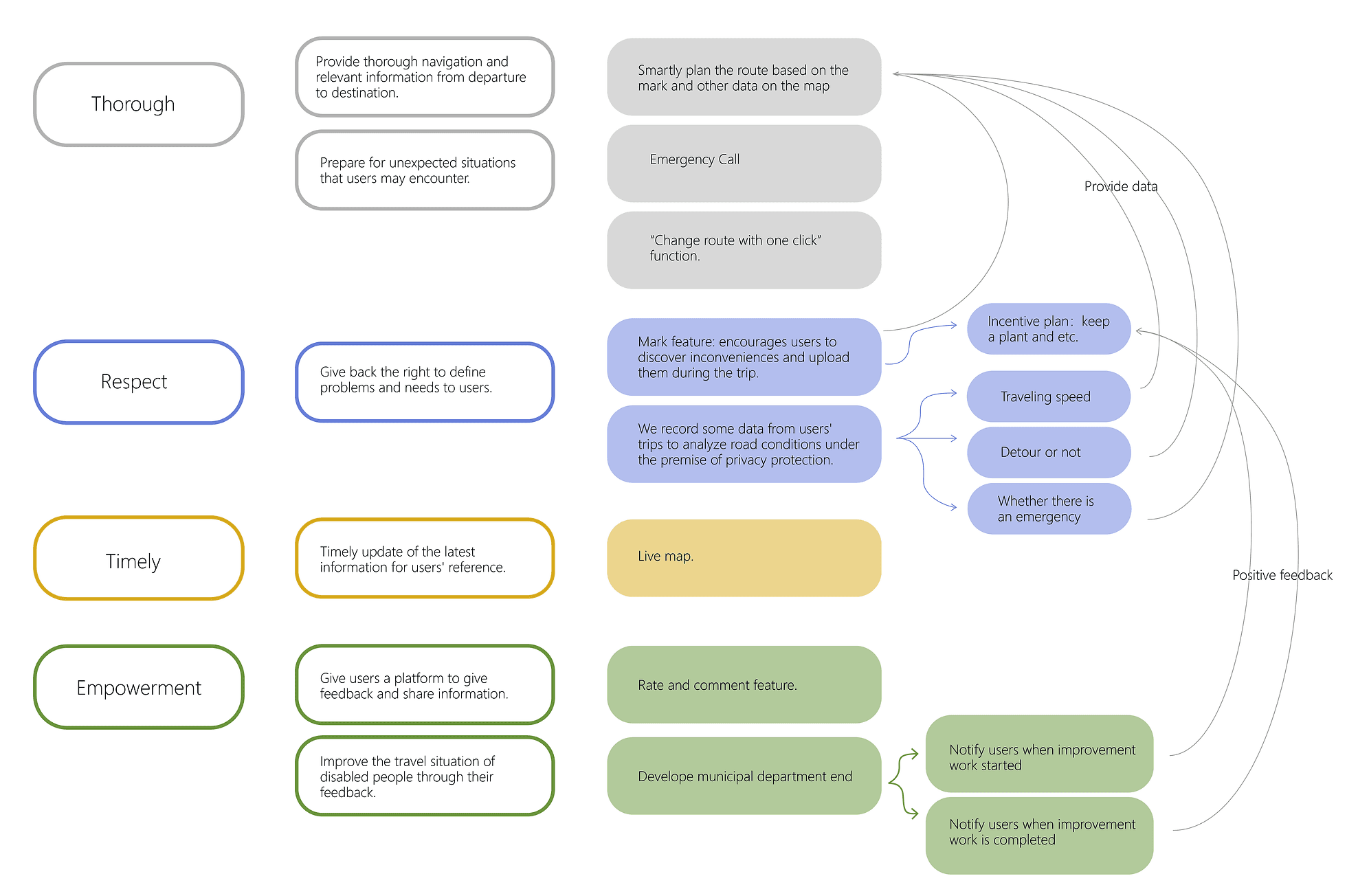
5.User Scenario
A system diagram visualizes the entire user interaction flow, detailing software assistance, information collection for route planning, and potential government improvements based on user data.
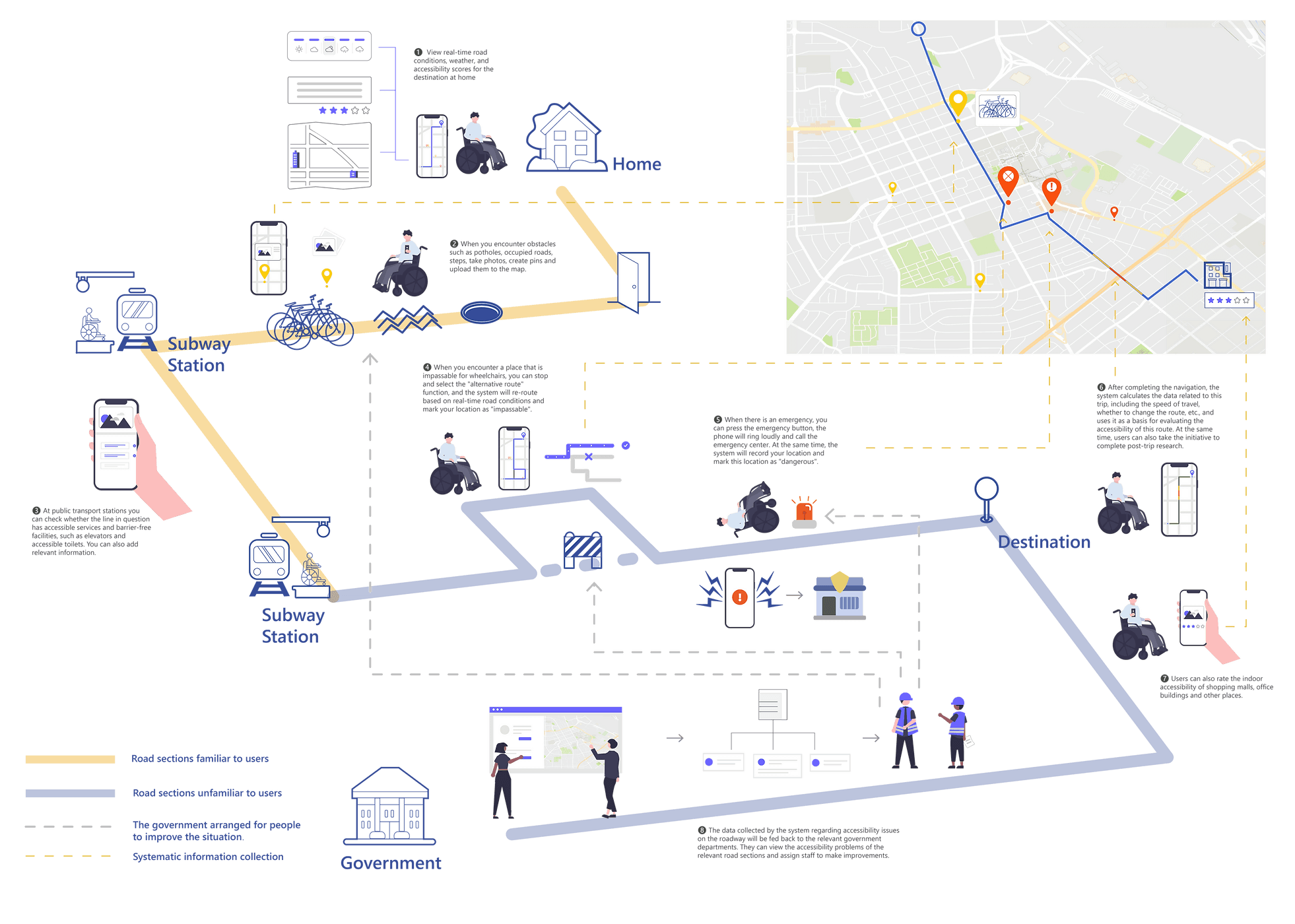
6.Prototype & Design Iteration
3.1 Low-fi Prototype

3.2 Iteration 1
The tagging process is overly complex and should be streamlined. Additionally, the system must offer clearer tag categories for easier navigation.

3.3 Iteration 2
Enhanced user interaction mechanisms are required to foster community engagement and communication.
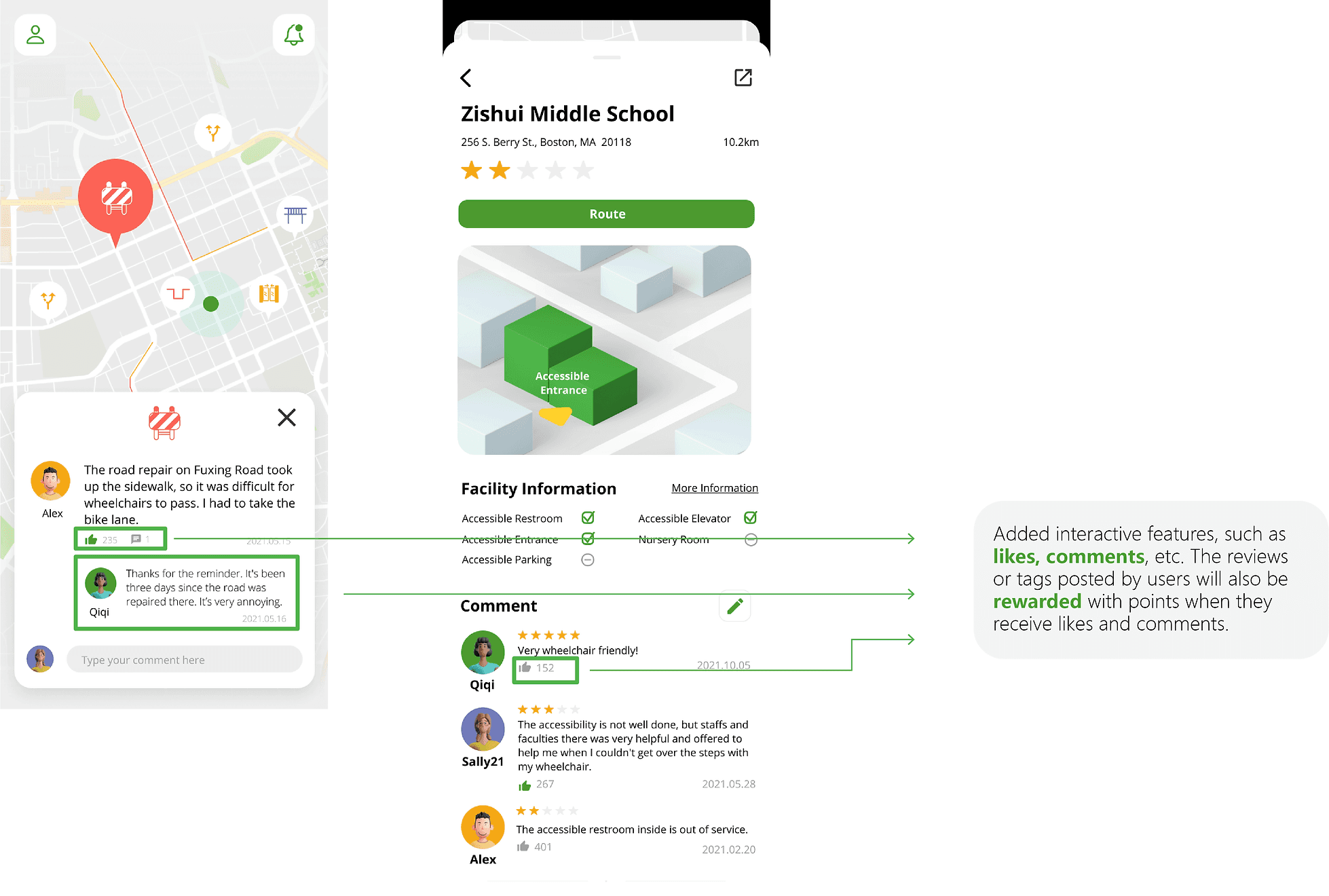
3.4 Iteration 3
Simplifying the post-trip review process can significantly boost questionnaire completion rates.

3.5 Iteration 4
Interface details have been modified for improved user comprehension and operation.
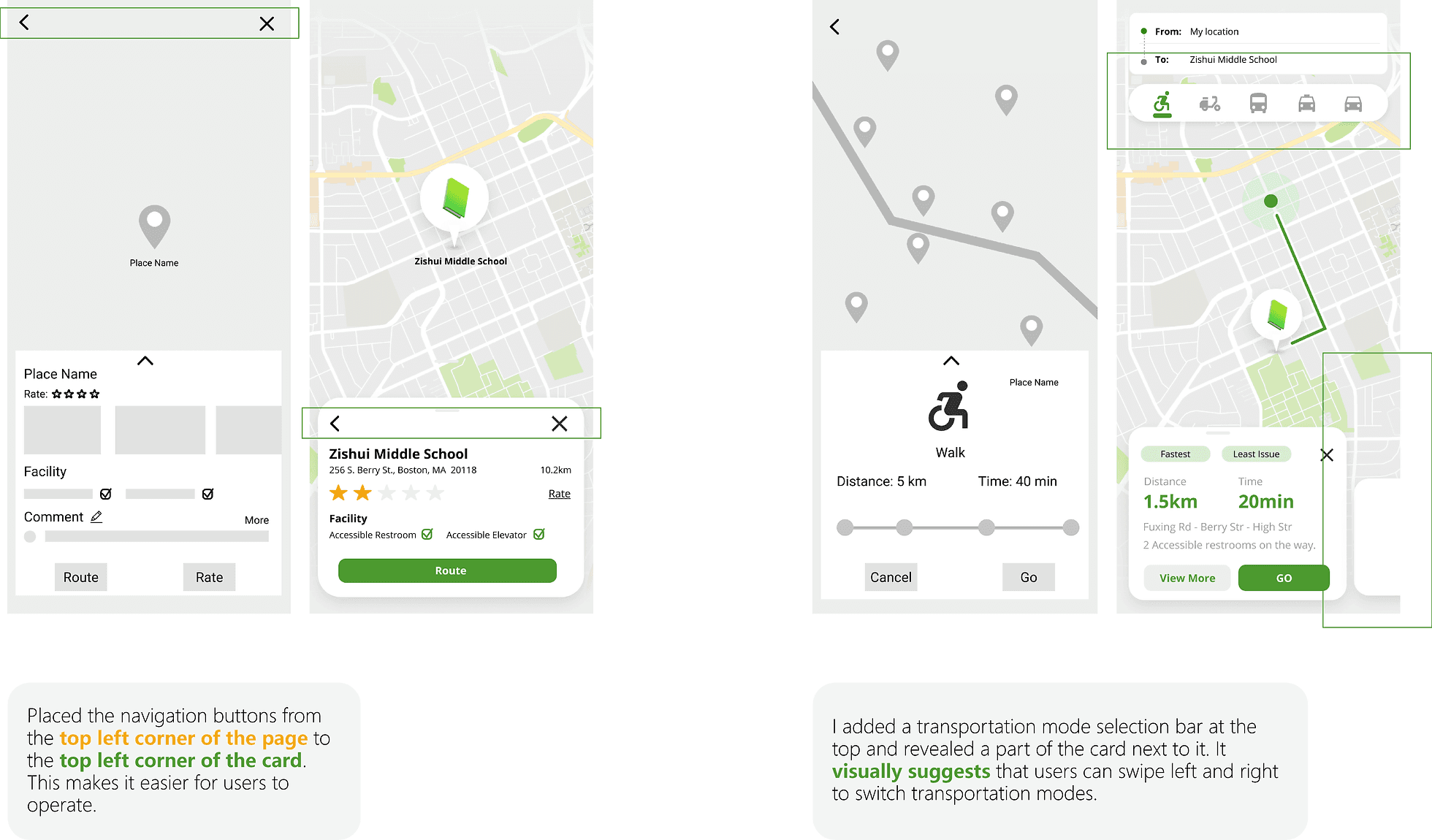
7.Final Outcomes
7.1 Ensuring Seamless Access Throughout the Journey
Our research highlighted the critical need for comprehensive, accessible travel information, such as the availability of accessible restrooms and identification of obstacles, for enhanced mobility. Unfortunately, this vital information often exists in scattered formats. InterWay aims to bridge this gap by offering in-depth, continuous access information from planning to arrival.
Accessible data, including road obstacles, available facilities, and destination accessibility, is prominently displayed across various platform pages—home, place details, route overview, and route specifics—to ensure users have all the information needed for a seamless journey.

7.2 Effective Planning Enhances Smooth Travel
Our findings reveal that pedestrians, notably those with disabilities, frequently face unforeseen barriers and impassable routes, leading to anxiety and frustration. To address this, InterWay has implemented smart planning and one-click re-routing features, ensuring a smoother travel experience for users.
Smart Route Optimization
InterWay's system intelligently considers multiple factors to determine the optimal path for travelers. It incorporates user-reported obstacle data, diversion points, pedestrian traffic speeds on specific roads, and any emergencies occurring along the route.

One-Touch Rerouting Feature
InterWay offers a one-click rerouting option for users facing impassable barriers. This function not only redirects the user around the obstacle but also logs the location, marking it on the map to alert other users of the impediment.
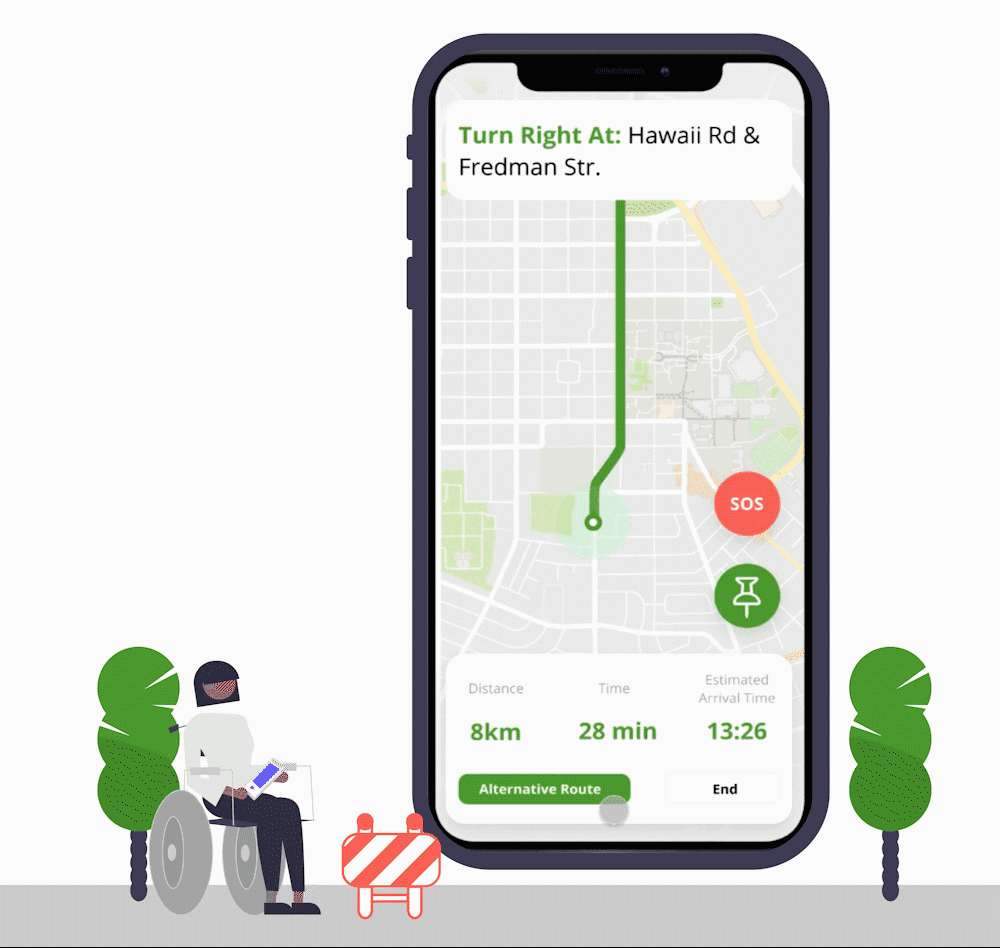
7.3 Feedback and Improvement System
Interway champions the idea that individuals are the experts of their own experiences. We motivate users to rate locations and document inaccessible road conditions, aiding community navigation and future enhancements. The report function stands as the core of our application. To facilitate precise feedback, we've developed a suite of icons and streamlined the reporting workflow, emphasizing ease and specificity in user contributions.

7.4 Other Features
Emergency Assistance Feature
For emergencies, like a fall, users can activate the emergency call feature by pressing and holding the designated button. This action triggers an automatic alarm call and emits a loud horn sound, drawing immediate attention to the situation.

Emergency Assistance Feature
For emergencies, like a fall, users can activate the emergency call feature by pressing and holding the designated button. This action triggers an automatic alarm call and emits a loud horn sound, drawing immediate attention to the situation.
